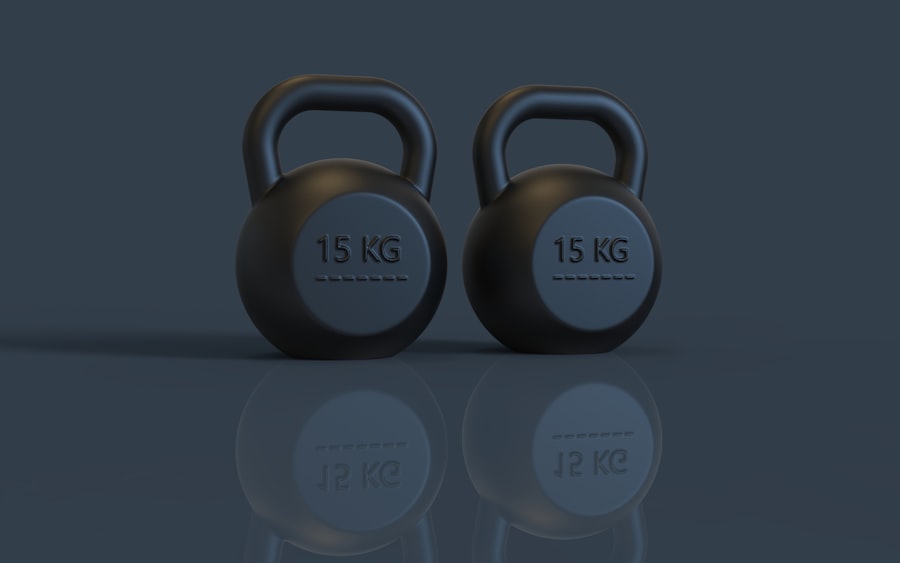In a world where accuracy is paramount, precision weighting emerges as a critical component in various fields, from scientific research to industrial applications. You may not realize it, but the weight of an object can significantly influence outcomes in experiments, manufacturing processes, and quality control. Precision weighting refers to the meticulous measurement of mass using highly sensitive instruments designed to provide reliable and repeatable results.
As you delve deeper into this topic, you will discover how precision weighting not only enhances the integrity of data but also plays a vital role in ensuring compliance with industry standards. Understanding the nuances of precision weighting can empower you to make informed decisions in your professional endeavors. Whether you are a researcher striving for accuracy in your experiments or a quality control manager overseeing production processes, grasping the principles of precision weighting will enhance your ability to achieve desired outcomes.
This article will explore the importance of accurate measurement, the technology behind precision weighting, and its applications across various industries, ultimately guiding you toward best practices in implementing precision weighting in your work.
Key Takeaways
- Precision weighting is a crucial aspect of accurate measurement in various industries.
- Understanding precision weighting technology is essential for achieving accurate and reliable results.
- Precision balances play a significant role in ensuring precise measurements in research and development.
- Factors such as environmental conditions and equipment maintenance can affect precision weighting.
- Calibration and regular maintenance of precision balances are necessary to ensure accurate measurements.
The Importance of Accurate Measurement
Accurate measurement is the cornerstone of any scientific or industrial process. When you consider the implications of even the slightest error in weight measurement, it becomes clear that precision is not merely a luxury but a necessity. In research settings, for instance, inaccurate measurements can lead to flawed conclusions, wasted resources, and potentially dangerous outcomes.
You may find that in fields such as pharmaceuticals or chemistry, where precise formulations are crucial, the stakes are particularly high. A minor deviation in weight can alter the efficacy of a drug or the outcome of a chemical reaction. In industrial contexts, accurate measurement directly impacts product quality and safety.
If you are involved in manufacturing, you understand that even small discrepancies in weight can lead to significant financial losses or regulatory issues. For example, if a product is underweight, it may not meet legal standards or customer expectations, resulting in returns and damage to your brand’s reputation. Conversely, if a product is overweight, it can lead to increased shipping costs and reduced profit margins.
Therefore, embracing accurate measurement practices is essential for maintaining quality control and ensuring customer satisfaction.
Understanding Precision Weighting Technology

Precision weighting technology encompasses a range of advanced instruments designed to measure mass with exceptional accuracy. At the heart of this technology are precision balances, which utilize sophisticated mechanisms to provide reliable weight readings. These balances often feature electromagnetic force restoration systems or load cells that convert mechanical force into electrical signals, allowing for highly sensitive measurements.
As you explore this technology further, you will appreciate how innovations in design and engineering have led to the development of instruments capable of measuring weights down to micrograms. Moreover, modern precision balances are equipped with digital displays and connectivity options that enhance usability and data management. You may find that many models now offer features such as automatic calibration, built-in data logging, and connectivity to computers or laboratory information management systems (LIMS).
These advancements not only streamline the weighing process but also facilitate compliance with regulatory requirements by ensuring traceability and accuracy in data recording. Understanding these technological advancements will enable you to select the right tools for your specific needs and improve your overall measurement practices.
The Role of Precision Balances in Measurement
| Types of Precision Balances | Features | Benefits |
|---|---|---|
| Analytical Balances | High precision, readability up to 0.1 mg | Accurate measurement of small quantities |
| Precision Balances | Readability up to 0.01 g | Suitable for general laboratory use |
| Micro Balances | Extremely high precision, readability up to 1 µg | Ideal for measuring tiny masses |
| Moisture Balances | Measure moisture content in samples | Useful for research and quality control |
Precision balances serve as the backbone of accurate weight measurement across various applications. When you think about the role these instruments play, consider how they are utilized in laboratories for research purposes, in manufacturing for quality control, and even in educational settings for teaching fundamental principles of measurement. Their ability to provide consistent and reliable results makes them indispensable tools for professionals across multiple disciplines.
In laboratory environments, precision balances are often used for weighing chemicals, biological samples, and other materials critical to experimental protocols. You may find that researchers rely on these balances to ensure that their measurements are accurate and reproducible, which is essential for validating their findings. In manufacturing settings, precision balances help maintain product consistency by allowing quality control personnel to verify that raw materials and finished products meet specified weight criteria.
This ensures that products are not only compliant with industry standards but also meet customer expectations for quality and performance.
Factors Affecting Precision Weighting
While precision balances are designed for accuracy, several factors can influence their performance and the reliability of weight measurements. One significant factor is environmental conditions; temperature fluctuations, humidity levels, and air currents can all affect the readings obtained from a balance.
For instance, placing balances on vibration-free surfaces and using draft shields can help mitigate external disturbances. Another factor to consider is the calibration of your precision balance. Over time, even the most advanced instruments can drift from their calibrated settings due to wear and tear or environmental changes.
Regular calibration is essential to ensure that your balance continues to provide accurate measurements. You may also want to consider the type of containers or weighing vessels used during measurement; certain materials can introduce additional variables that affect weight readings. By being aware of these factors and taking proactive measures to address them, you can enhance the reliability of your precision weighting practices.
Calibration and Maintenance of Precision Balances

Calibration is a critical aspect of maintaining the accuracy of precision balances. You may find that regular calibration ensures that your balance remains within specified tolerances and provides reliable measurements over time. Most manufacturers recommend a calibration schedule based on usage frequency and environmental conditions; however, it is wise to perform checks more frequently if you notice any discrepancies in weight readings.
Calibration typically involves using certified weights that have known mass values to adjust the balance’s readings accordingly. In addition to calibration, proper maintenance is essential for prolonging the lifespan of your precision balance and ensuring its continued accuracy. This includes routine cleaning to remove dust and contaminants that could interfere with measurements.
You should also inspect the balance for any signs of wear or damage regularly; components such as load cells or display screens may require replacement over time. By implementing a comprehensive maintenance plan that includes both calibration and routine checks, you can ensure that your precision balance remains a reliable tool for accurate weight measurement.
Applications of Precision Weighting in Various Industries
Precision weighting finds applications across a diverse range of industries, each benefiting from accurate mass measurements in unique ways. In pharmaceuticals, for example, precise weighing is crucial for formulating medications with exact dosages. You may be aware that even slight variations in ingredient weights can lead to ineffective or unsafe products; thus, pharmaceutical companies rely heavily on precision balances during both research and production phases.
In the food industry, precision weighting plays a vital role in ensuring product consistency and compliance with regulatory standards. When you consider how important it is for food manufacturers to accurately measure ingredients for recipes or portion sizes for packaging, it becomes clear that precision balances are indispensable tools in this sector as well. Additionally, industries such as cosmetics and chemicals also utilize precision weighting technology to ensure product quality and safety throughout their production processes.
Advantages of Using Precision Weighting in Research and Development
The advantages of using precision weighting in research and development are manifold. For researchers like yourself, having access to highly accurate weighing instruments allows for greater confidence in experimental results. When you can rely on precise measurements, it enhances the validity of your findings and supports reproducibility—two critical factors in scientific research.
This reliability can lead to more robust conclusions and ultimately contribute to advancements in knowledge within your field. Moreover, precision weighting facilitates innovation by enabling researchers to experiment with new formulations or processes with greater accuracy. You may find that when developing new products or conducting experiments with complex variables, having precise measurements allows for more controlled conditions and better data analysis.
This capability not only accelerates the research process but also enhances collaboration among teams by providing consistent data that can be shared across disciplines.
Common Mistakes to Avoid in Precision Weighting
While precision weighting is essential for achieving accurate measurements, there are common mistakes that can undermine your efforts if you’re not careful. One frequent error is neglecting environmental factors; as previously mentioned, temperature fluctuations and air currents can significantly impact weight readings. If you fail to account for these variables by placing your balance in an appropriate location or using draft shields, you may end up with inconsistent results.
Another common mistake involves improper handling of samples or containers during weighing procedures. You might inadvertently introduce contaminants or alter the weight by using inappropriate vessels or touching samples with bare hands. To avoid these pitfalls, always use clean containers designed for weighing purposes and handle samples with care—using gloves when necessary—to maintain their integrity throughout the measurement process.
Future Developments in Precision Weighting Technology
As technology continues to evolve at an unprecedented pace, so too does the field of precision weighting. You may be excited to learn about emerging trends such as smart balances equipped with artificial intelligence (AI) capabilities that enhance user experience through automated calibration processes and real-time data analysis. These advancements promise not only improved accuracy but also greater efficiency in laboratory workflows.
Additionally, developments in connectivity options are paving the way for seamless integration between precision balances and laboratory information management systems (LIMS). This integration allows for streamlined data collection and analysis while reducing human error associated with manual data entry. As you look toward the future of precision weighting technology, it’s clear that innovations will continue to shape how professionals like yourself approach measurement practices across various industries.
Conclusion and Recommendations for Implementing Precision Weighting
In conclusion, precision weighting is an indispensable aspect of accurate measurement across numerous fields. By understanding its importance and embracing advanced technologies such as precision balances, you can significantly enhance your work’s reliability and effectiveness. As you implement precision weighting practices within your organization or research endeavors, consider establishing regular calibration schedules and maintenance protocols to ensure optimal performance from your instruments.
Furthermore, remain vigilant about environmental factors that could impact measurements while avoiding common mistakes associated with sample handling and weighing procedures. By adopting these recommendations and staying informed about future developments in precision weighting technology, you will position yourself at the forefront of accurate measurement practices—ultimately contributing to better outcomes in your professional pursuits.
Precision weighting is a concept often discussed in the context of predictive coding and Bayesian brain theories, where it refers to the brain’s ability to assign different levels of importance to various sensory inputs based on their reliability. This concept is crucial for understanding how the brain processes information and makes decisions. For those interested in delving deeper into the intricacies of precision weighting and its implications in psychology, a related article can be found on Unplugged Psych. You can explore more about this topic by visiting their unpluggedpsych.
com/’>homepage, which offers a range of resources and articles on similar subjects.
WATCH THIS! The Shocking Truth About Perception Loops
FAQs
What is precision weighting?
Precision weighting is a method used to assign different weights to items in a dataset based on their importance or relevance. This allows for more accurate analysis and decision-making.
How is precision weighting calculated?
Precision weighting is calculated using various methods such as statistical analysis, machine learning algorithms, or expert judgment. The goal is to assign weights that reflect the true significance of each item in the dataset.
What are the benefits of precision weighting?
Precision weighting allows for more accurate and reliable analysis by giving greater importance to the most relevant items in a dataset. This can lead to better decision-making and more effective use of resources.
Where is precision weighting used?
Precision weighting is used in various fields such as finance, marketing, healthcare, and manufacturing. It is particularly useful in situations where there is a large amount of data and a need to prioritize certain items for analysis or action.
What are some common applications of precision weighting?
Some common applications of precision weighting include risk assessment, customer segmentation, inventory management, and performance evaluation. It is also used in research and development to prioritize experiments or projects.




